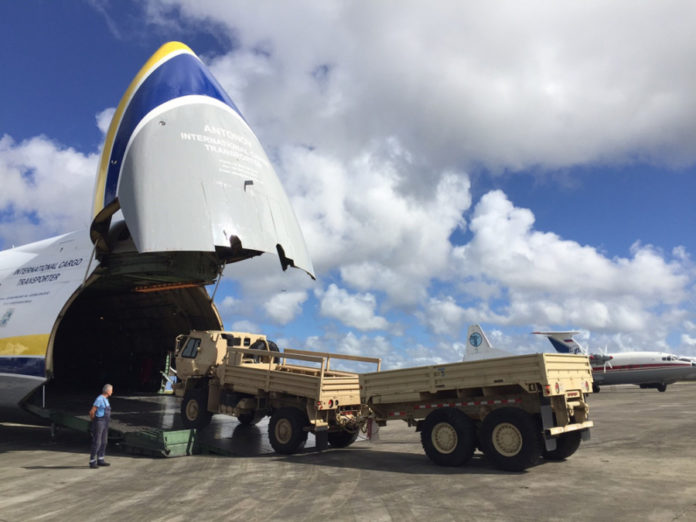

When helping to deal with a humanitarian crisis, proper planning and communication are vital to ensure airports can cope and aid can reach those in need.
Air Partner has assisted with a number projects including missions to Libya, Yemen and Central Africa, as well as various African countries. In the aftermath of Typhoons Mangkhut and Yutu, a number of charter flights went from the US to Guam and Saipan in the Mariana Islands.
A major factor is the operational capability of destination airports, including the feasibility to offload cargo. When delivering aid to victims of Typhoon Haiyan in the Philippines, Air Partner delivered a main deck loader in an Antonov AN-124 to offload cargo from subsequent aircraft.
Air Partner director of freight, Mike Hill says: “Congestion always creates a landing slot problem – this was a particularly severe issue in Kathmandu after the Nepal earthquake in 2015. When smaller airports like this are suddenly faced with huge numbers of flights, the damaged infrastructure is overstretched and so aircraft numbers need to be limited.”
Fuel shortages can quickly become a problem, so operators often have to arrive with enough fuel for the return journey, as there is no guarantee they will be able to refill at the destination.


Hill says: “Our Ops24 team in London Gatwick monitors the situation on the ground for every charter we arrange, and we usually have a member of staff out on the ground too so that we can react quickly to any unforeseen issues that may arise.”
The different departments of Air Partner often work together, with the Emergency Planning Division operating flights arranged through the Freight, Commercial Jets and Private Jets division, depending on the mission.
“Whether delivering relief supplies to disaster zones or evacuating people from affected areas, Air Partner’s team can execute complex logistics in short timeframes. Air Partner’s divisions work together to transport time-critical cargo, along with crews/personnel, to sites all over the world, including difficult to reach areas, remote islands, and places affected by natural disasters.”
Working with the Emergency Planning Division usually happens when evacuating staff from emergency situations, which have included chartering a Boeing 747 to move car workers out of Japan to Germany in the wake of an earthquake and tsunami, and a number were operated during the Arab Spring.
“We also have chartered smaller “combi” aircraft to send Search and Rescue teams, their search dogs and equipment into crisis regions.”
The freight team often has to arrange highly complex missions at short notice, delivering relief supplies within 48 hours. Perishables tend to have the highest priority, along with water, medical equipment and power supplies.
In the aftermath of a crisis such as a natural disaster, it can sometimes be weeks before other modes of transport such as trucks or boats become available again so Air Partner can be providing assistance for a considerable period of time. “In the aftermath of Hurricane Maria last year, we delivered goods to Puerto Rico to help re-build the island for over four weeks after the hurricane had hit.”
Humanitarian aid missions are always challenging, but Air Partner cites flying cargo to the Mariana Islands after Typhoon Yutu as being particularly difficult due to the size of the relief effort, the volume of flying and nature of the goods.
Despite the challenges, the aid will get through, and Air Partner was not going to be defeated. Hill says: “On account of the urgent and critical nature of these operations, we stationed a member of the Air Partner team on the island of Guam to co-ordinate the organisation and delivery of all cargo from the appointed freight forwarder of the Federal Emergency Management Agency (FEMA), as well as manage all aircraft loading and operations. This ensured we were able to deliver the best possible service to our client.”












